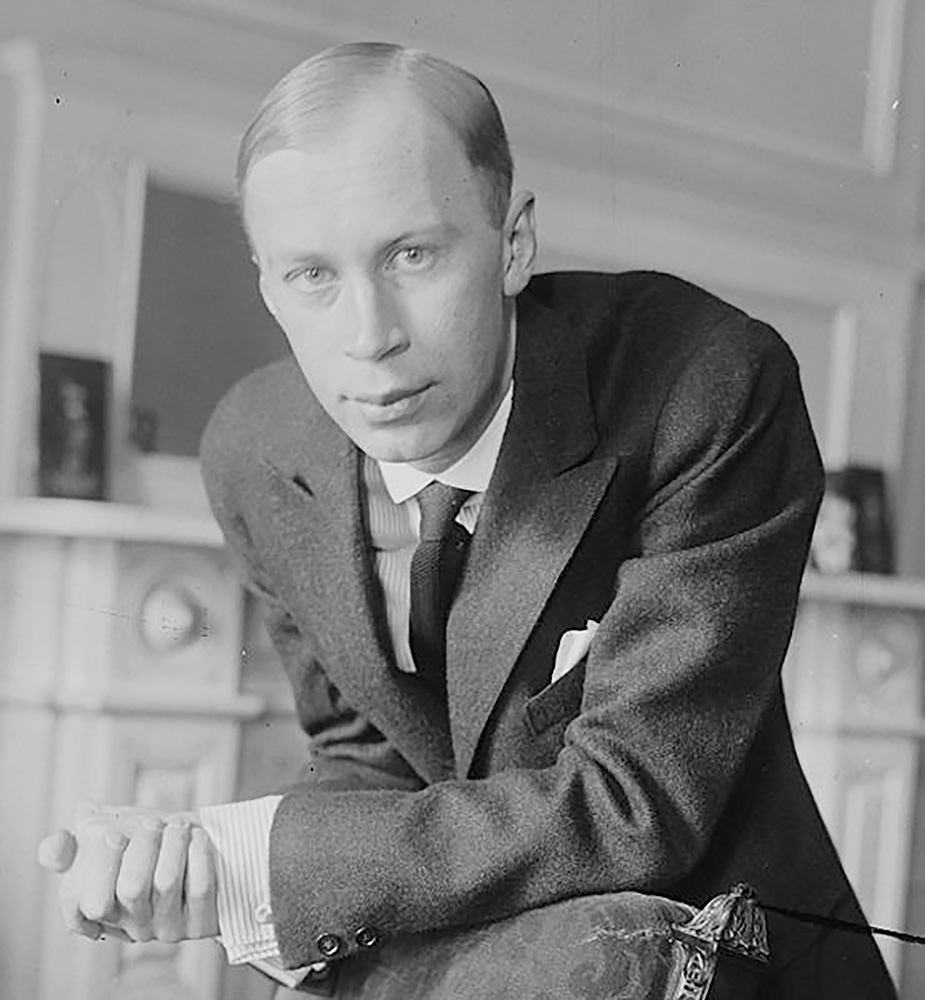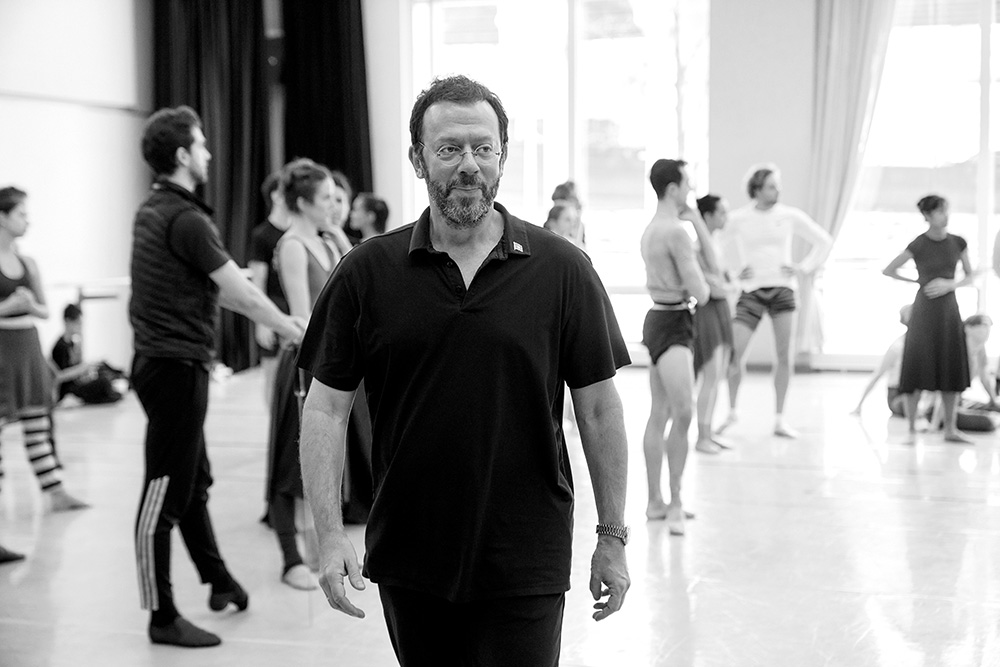Ballet
Nouvelles+
Sergei Prokofiev and Romeo and Juliet
15 juin 2023
by John Hart and Caroline Dickie

Sergei Prokofiev. Photo by Sidney Forman.
Sergei Prokofiev’s Romeo and Juliet is one of the most recognizable and celebrated scores of the 20th century. Yet its achievement can be difficult to reconcile with the ballet’s troubled creation and the challenges Prokofiev faced in Stalinist Russia. Like Shakespeare’s play that inspired Prokofiev, Romeo and Juliet’s genesis had a considerable amount of drama, strife and even bloodshed.
At the age of 26, Prokofiev was one of many artists who fled their homeland during the Russian Revolution in 1917. Prokofiev toured Canada and the U.S. as a pianist and conductor before he settled in Paris where he found inspiration and community with Serge Diaghilev’s Ballet Russes. During the Depression, however, he often turned to Russia for commissions and he was persuaded to return to Russia as a cultural luminary. Although Prokofiev resisted Russia’s politicization of music and the prescription to compose “music for the people,” Josef Stalin promised Prokofiev that he could write any ballet music he wanted and approved his repatriation.
In 1935, during negotiations with the Kirov Ballet in St. Petersburg to produce a new work, Prokofiev sought a lyrical scenario for a ballet. His friend Adrian Piotrovsky, a scenarist, suggested Romeo and Juliet and he composed the libretto with another friend and scenarist, Sergei Radlov, who was also the Kirov’s stage director. The project was to be a lavish, spectacular production and Prokofiev’s first full-length ballet.

Galina Ulanova and Alexander Lapauri in Romeo and Juliet (Bolshoi Ballet, 1956).
Radlov’s situation with the Kirov Ballet soured, however, and the collaborative team turned to Moscow’s Bolshoi Ballet which was eager to sign a contract. The company held a trial with the music and dancers and decided that the music was wonderful but undanceable. They also balked at the happy ending in which the lovers survive.
Progressive artists like Prokofiev were kept under close surveillance at the time and liable to be perceived as threats to Soviet ideology. In 1936, the Great Terror began and many artists were denounced. The Committee on Arts Affairs conducted a review of the Bolshoi’s repertoire and, displeased, removed the entire administration. Both Piotrovsky and Mutnykh, the Bolshoi’s leader, were arrested and executed as part of the terrifying campaign of political oppression. Prokofiev, treading lightly, chose to present Romeo and Juliet for the first time outside Russia, heavily edited to a single act, in Brno, Czechoslovakia in 1938.
The first full-length version of Romeo and Juliet in Russia did not appear until 1940 when the Kirov Ballet performed it with choreography by Leonid Lavrovsky. The debut was a success, though Prokofiev was unhappy with the changes to the score that Lavrovsky and the dancers demanded. The ballet was restaged at the Bolshoi Ballet in 1946, a politically motivated production following World War II. Prokofiev pleaded to restore the score to his original vision but Stalin signed off on its “mangled” version. Only two years later, his health declining, Prokofiev was denounced by the Soviet regime and his works were removed from the repertoire. He died in 1953 on the same day as Stalin.
In 1956 Lavrovsky and the Bolshoi Ballet went on a European tour which included performances at Covent Garden in London. Romeo and Juliet was hailed for its spectacle, grandeur and drama, and made indelible impressions on two choreographers: John Cranko and Kenneth MacMillan.
Today, the most frequently performed versions of Romeo and Juliet include Cranko’s 1958 staging for La Scala, which he updated in 1962 for Stuttgart Ballet, and MacMillan’s 1965 adaptation for The Royal Ballet. Both are gorgeous, time-honoured works that owe a debt to Lavrovsky and ensured that Prokofiev’s music is the definitive score for any version.
Cranko himself came to Toronto to stage his version for The National Ballet of Canada in 1964. It was the opening work in the newly built O’Keefe Centre, a large production deliberately chosen by Celia Franca to suit the theatre’s large stage. As a bookend, Karen Kain programmed the ballet to be the last in the theatre in 2006 before the company moved to the Four Seasons Centre.
Given the ubiquity of Cranko’s and MacMillan’s versions, it is a mark of distinction for a top ballet company to have its own adaptation of Romeo and Juliet. In 2011, Karen Kain made this ambition a reality for the National Ballet when she commissioned leading choreographer Alexei Ratmansky to create a new Romeo and Juliet in honour of the company’s 60th anniversary season.

Alexei Ratmansky in Rehearsal for Romeo and Juliet. Photo par Karolina Kuras.
Ratmansky, who is passionate about recreating legacy works and a sensitive interpreter of Prokofiev’s music, was an ideal collaborator. His Romeo and Juliet is poetic, richly characterized and full of challenging choreography for today’s athletic dancers. Musicality is at its core, with Ratmansky beautifully capturing the dramatic, symphonic and atmospheric qualities of Prokofiev’s score.
Post notes: Alexei Ratmansky was at the Bolshoi Ballet creating a new work when Russia invaded Ukraine in 2022 – he immediately made plans to leave the country. Ratmansky is part Ukrainian and a former principal dancer with Ukrainian National Ballet; both his extended family and his wife’s family live in Ukraine. He has been outspoken about the war and critical of Vladimir Putin. His works are still being performed at the Bolshoi Ballet, where he was once Artistic Director, but now without crediting his name, effectively denouncing him.
Although Sergei Prokofiev was born in the Russian Empire in 1891, the area is now recognized as Donetsk, Ukraine.
Romeo and Juliet is onstage 15 au 25 juin 2023. En savoir plus
